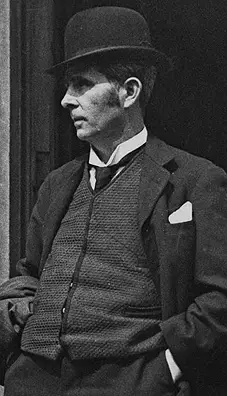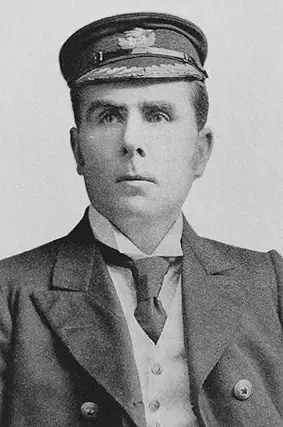Captain Herbert J Haddock

Date of birth: 27th January 1861
Place of birth: Rugby, Warwickshire, England
Marital status: Married
Crew position: Titanic's first captain
Date of death: 4th October 1946


Age: 51
Height: 1.75m
Complexion: Dark
Eye Colour: Green
Other: Tattoos on both arms

Putting aside any reference to a certain TinTin character, Herbert Haddock is mostly known as the first captain of the Titanic. However his short, six-day tenure as master of the world's largest and soon to be most infamous ship, would not have normally registered as being worthy of any note in his otherwise impressive career. He was a very well admired and capable captain in his own right. Joining the White Star Line in 1888, as fourth officer, he very quickly climbed the ranks, reaching chief officer within 4 years and made commander in his fifth year at the line. He spent the next 12 years establishing himself as the respected, multi-talented (painting, fencing, French, German and wireless operating are listed among his many hobbies) and reliable master of the Britannic, Germanic, Cedric and Oceanic.
He was a logical choice to follow Edward Smith as the new commander of the Olympic, allowing Smith to captain the maiden voyage of Titanic. The two ships passed each other - at some distance - on the English channel as Haddock took the Olympic on her westward journey to New York and Smith took Titanic on her delivery trip into Southampton. 12 days later the two ships were destined to pass each other again mid-North Atlantic, but fate intervened when Haddock received an emergency distress call from the sister ship. He did everything in his power to come to the rescue, but 500 miles away it was more than a day's journey before he was anywhere near the disaster scene. Having the most powerful wireless onboard meant that Haddock's ship became a critical source of information regarding the loss of the Titanic.
The disaster continued to impact on his career: he was unfairly blamed as the source of early news of "all Titanic's passengers saved" and had to clear his name; it resulted in the disruption to his second voyage on Olympic as a crew mutiny over the quality of the hastily added lifeboats caused havoc, involved the Navy and ultimately cancelled the voyage; he went to court over the mutiny and testified at the Senate Titanic Inquiry and attended the British Titanic Inquiry. This was all followed by a series of bad news events for Haddock and the Olympic in 1912: a near collision, a grounding and a lost propeller blade, after which Haddock lost his ship as the Olympic went in for a refit that took six months. Haddock was allowed an opportunity to redeem himself to some extent when he used the Olympic to rescue all the crew from the sinking of the HMS Audacious in 1914 - except in this case, unlike Titanic, it was wartime and a press blackout over the incident meant few knew of his actions. However the Navy took note and when the Olympic was taken out of service Haddock was appointed commander of a "dummy fleet" of civilian ships masquerading as battleships. The effect of this deception is debatable but it possibly meant he missed out on being captain of the third Olympic class ship, the Britannic and by 1916 he had resigned from the White Star Line, his career ending as the first Royal Naval Reserve Aide-de-Camp to the King. It was an honour that showed the level of respect for a man described as "a lovable character and a true English gentleman."